How Was Jan Miense Molenaer Influential to Dutch Baroque Art
At that place also have been many experienced women in the field of painting who are still renowned in our time, and who could compete with men. Amid them, ane excels uncommonly, Judith Leyster, called "the true Leading star in art."
—Theodore Schrevel,Harlemias,1648
4 hundred 10 years ago on this 24-hour interval, July 28, Judith Leyster (or Leijster) was baptized in Haarlem. Judith was the eighth child in her family. She went on to become, as Theodore Schrevel reported, "the true Leading star in art." The name Leyster, which translates from Dutch equally lode star or guide star, is a proper noun the family unit adopted from the brewery that Judith'south begetter ran. The creative person signed her paintings with a distinctive design that incorporates her initials with a star.
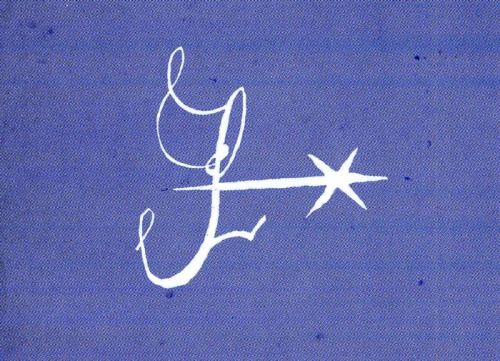
Judith and the Guild
It isn't articulate whether Judith Leyster or Sara van Baalbergen was the commencement woman to exist accepted into the Haarlem Guild of St. Luke as a chief painter. (Luke the Evangelist is the patron saint of artists, so his name is commonly associated with early on modern European guilds for painters and other artists.) But it is generally accepted that Leyster was one of the first two women painters on sail to go a member of the Guild.
Applicants were required to submit to a "principal work" to the Gild as role of the application process. Scholars believe that Leyster submitted her self-portrait, a painting that for a couple of centuries was assumed to be a portrait by Frans Hals.
One time accepted into the Lodge, Judith Leyster took on some male apprentices. When 1 of them left her, without the knowledge or permission of the Guild, to join the Frans Hals studio, Leyster took the case to court. The resulting settlement involved:
- the student's mother paying four guilders to Leyster in punitive damages;
- Hals paying a three-guilder fine (he kept the amateur); and
- Leyster herself paying a fine for non having registered the young man with the Guild in the first identify.
Themes of Leyster's paintings
Of her paintings that survive today, many are genre paintings of i to iii figures, sometimes children, often engaged in games, musical functioning or revelry of some other kind.
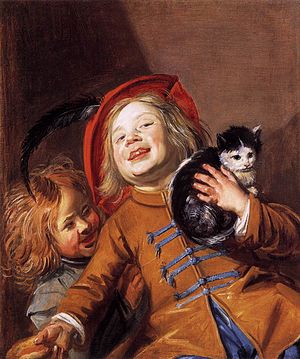
She also painted portraits and still lifes. Until the rediscovery ofBlompotje about a decade ago (come across below), Still Life with a Basket of Fruit was believed to be the only existing case of a Judith Leyster nevertheless life.
Later in her career …
The majority of Leyster'south known works were painted between 1629 and 1635, before she married the painter January Miense Molenaer in 1636. They had v children, two of whom survived into adulthood. Once she became a mother, she seems to accept devoted much of her time to family and to managing her hubby'due south studio, rather than to painting. However, some paintings from the years after her marriage accept recently come to lite.
Leyster died in 1660, at the age of fifty. But her story doesn't cease there.
An human action of art fraud rescues Leyster from obscurity
For centuries, the artist'due south entireoeuvre was misattributed. Some works were credited to Frans Hals. Others were attributed to her husband, January Miense Molenaer, possibly because after her expiry many of her paintings were inventoried as "the wife of Molenaer," rather than as "Judith Leyster."
While the initial misattribution of her works may have been largely accidental, there is at least ane instance of deliberate deception. In 1893, an expert found Leyster's distinctive signature mark on a painting sold to the Louvre: it was subconscious under a simulated signature reading "Frans Hals." The subsequent lawsuit was settled with a reimbursement to the museum of 25% of the buy toll.
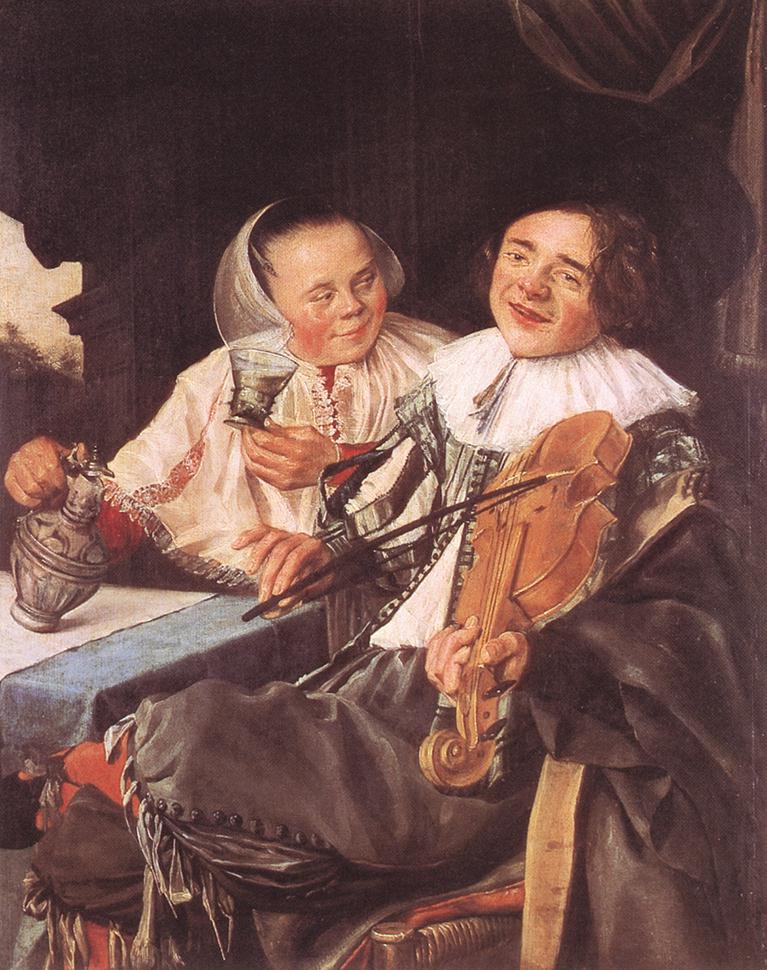
Around this fourth dimension, Cornelis Hofstede de Groot—the Dutch art historian who discovered the deception in the Louvre example—reattributed a half dozen other paintings to Judith Leyster.
New research leads to new discoveries
Fast-forward to the 1970s, when art historian Frima Play a trick on Hofrichter took Leyster's life and work every bit the topic of her dissertation. (Run across her reflections about the feel in her essay fromAtypical Women: Writing the Artist, edited by Kristen Frederickson and Sarah E. Webb, University of California Press, 2003.) Hofrichter later published the results of her thesis research in a book,Judith Leyster: A Woman Painter in Holland's Golden Age (Davaco, 1989).
Following on from the groundbreaking piece of work of Hofrichter and other art historians, in 1993 the Frans Hals Museum and the Worcester Art Museum presented the exhibition "Judith Leyster: A Dutch Master and Her Earth."
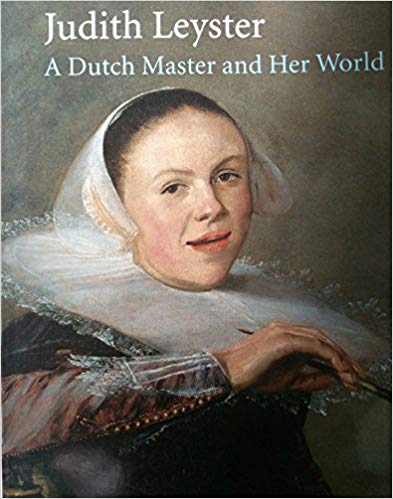
In 2009, in honor of the four hundredth anniversary of the birth of the creative person, the National Gallery of Art in Washington, DC and the Frans Hals Museum in Haarlem hosted "Judith Leyster, 1609-1660." In the same year, coinciding with the Hals Museum iteration of the exhibition, a Belgian collector alerted the museum to a Leyster work in her possession, which had never before been publicly displayed. Anna Tummers, curator of Former Masters at the museum, authenticated the work as a flower still life signed "Judith. molenaers 1654." Experts had known of this work, since it is documented in the inventory of possessions of Leyster'southward husband when he died in 1668. Only it had long been assumed lost.
Just a few years ago, in 2016, a later Leyster self-portrait came to light. Experts from the sale firm Christie's had been hired to evaluate the contents of an English language land estate. There they discovered this long-lost treasure, hiding in plain sight—the owners had no thought of its value and historical significance. According to an commodity in Artnet News, it sold at sale for nearly $600,000.
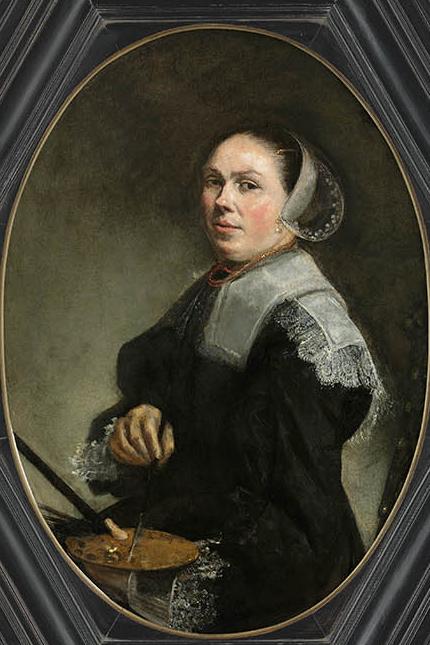
In November 2018, Judith Leyster herself turned upward in an unexpected place—every bit a protagonist in a work of historical fiction. A Low-cal of Her Own, by Carrie Callaghan, was deemed past Publishers Weekly to exist "a riveting debut," and the Washington Independent Review of Books selected the novel every bit ane of its "Favorite Books of 2018." Read Art Herstory'southward interview with the author here.
To date, some 35 surviving paintings have been identified as Judith Leyster'south work. It is hard to present an exact count, since in some cases the attribution is all the same contested. These works can be institute today in museums and private collections in (at least) Holland, the United States, Britain, Italia, Sweden, France, Germany, Norway, and Italian republic.
With luck, the coming years will bring new discoveries about Leyster, equally art historians, dealers, and other cultural professionals proceed their piece of work of restoring this female One-time Master to her rightful place of honor in the fine art historical record.
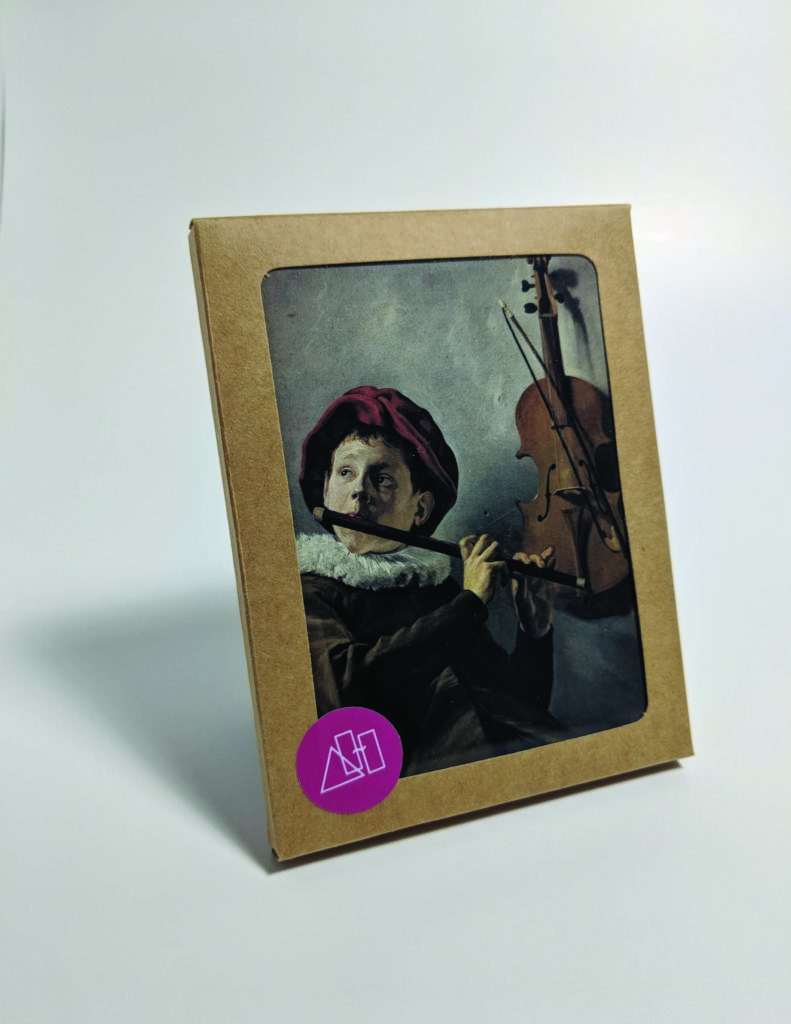
As of December 2019, Judith Leyster's Male child Playing the Flute, 1630s, is included in the CODART Catechism as one of 100 Dutch/Flemish masterpieces (per a vote past CODART curator-members). The original is held at Nationalmuseum in Stockholm, Sweden. The painting is reproduced on an Art Herstory notation carte. For more information about this card and i other that reproduces a Leyster work, visit the Art Herstory Store. See as well the Fine art Herstory Judith Leyster resource page.
More about Dutch or Flemish Women Artists:
Books, Blooms, Capitalist: The Life and Work of Catharina Backer, by Nina Reid
Alida Withoos: Creator of beauty and of visual noesis, by Catherine Powell
Levina Teerlinc, Illuminator at the Tudor Courtroom, past Louisa Woodville
Susanna Horenbout, Courtier and Artist (Guest post by Dr. Kathleen E. Kennedy)
A Clara Peeters for the Mauritshuis (Guest post by Dr. Quentin Buvelot)
Floral Still Life, 1726—A Masterpiece by Rachel Ruysch (Invitee post by Dr. Lawrence West. Nichols)
Women Artists of the Dutch Golden Ageat the National Museum of Women in the Arts
Gesina ter Borch: Artist, not Amateur (Invitee mail service by Dr. Nicole Due east. Cook)
Rachel Ruysch (1664–1750): A Birthday Post
The Protofeminist Insects of Giovanna Garzoni and Maria Sibylla Merian (Guest mail service by Prof. Emma Steinkraus)
More Art Herstory blog posts:
Angelica Kauffman and Mary Moser: Founding Women Artists of the Royal Academy
An Interview with Carrie Callaghan, Author of "A Light of Her Own"
Hearts of Our People: Native Women Artists (Invitee post by Dr. Elizabeth Sutton)
The Priceless Legacy of Artemisia Gentileschi: A Curator's Perspective (Guest post by Dr. Judith Westward. Mann)
'Vivid Souls': A London Exhibition Celebrating Mary Beale, Joan Carlile, and Anne Killigrew (Guest post by Dr. Laura Gowing)
New Adventures in Teaching Art Herstory (Guest post by Dr. Julia Dabbs)
Renaissance Women Painting Themselves (Guest post by Dr. Katherine A. McIver)
An Interview with Joy McCullough, Writer of "Blood H2o Pigment" (BWP is a novel-in-verse featuring Artemisia Gentileschi as protagonist)
A Dozen Swell Women Artists, Renaissance and Baroque
Why Do Old Mistresses Thing Today? (Guest post by Dr. Merry Wiesner-Hanks)
Michelangelo's Sisters: (Re)Introducing Female Old Masters
Source: https://artherstory.net/judith-leyster-leading-star/
0 Response to "How Was Jan Miense Molenaer Influential to Dutch Baroque Art"
إرسال تعليق